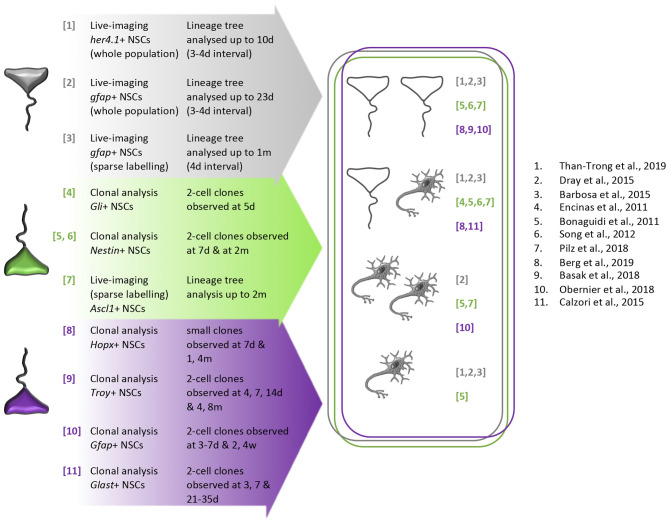FIGURE 7.
Schematic summary of division modes directly observed in adult mouse telencephalic neurogenic niches and in the zebrafish adult pallium in vivo. To evidence with certainty the existence of each division mode, we listed on the left part of the figure the clonal lineage tracing and live-imaging analyses only. For all the clonal analysis, we also only focused on 2–3-cell clones data at various time of induction/chase. Arrow depict the path leading individual NSC toward a cell fate decision (symmetrical self-renewing division, asymmetrical self-renewing division, symmetrical differentiating division or direct differentiation, illustrated on the right part of the figure). In the zebrafish pallium (gray NSCs), the mouse SEZ (purple NSCs), and the mouse SGZ (green NSCs), the three modes of division were evidenced. Direct neuronal differentiation was observed in the zebrafish adult pallium and mouse SEZ. In the SEZ, Gfap+ and Troy+ NSCs are able to symmetrically self-renew, symmetrically differentiate and asymmetrically divide whereas Glast+ NSCs were only described to asymmetrically divide. In the SGZ, Nestin+ and Ascl1+ NSCs can symmetrically self-renew, symmetrically differentiate and asymmetrically divide although Gli+ NSCs were only observed to asymmetrically divide and Hopx+ NScs to symmetrically self-renew and asymmetrically divide. Numbers refer to publications (see reference list).

